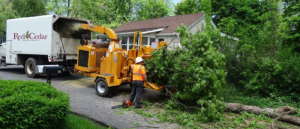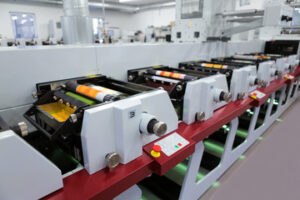Accurate pest identification is the first step in any control program. Control goals include prevention, suppression, and eradication. Prevention is controlling a pest before it causes damage or nuisance.
Suppression reduces pest numbers to an acceptable level and prevents them from building up again, while eradication destroys the pest population. Contact Pest Control Weymouth now!

Clutter provides places for pests to hide and breed and can make it harder to remove them with baits or traps—Therefore, it is recommended that floors and surfaces be regularly cleaned.
Pest Identification
Whether dealing with weeds, insects, or microbes, pest identification is the first step in developing an effective pest control strategy. Identifying the pests present allows you to determine which methods will be most effective and ensure that any pest control tactics are safe and appropriate for the environment.
Correctly identifying the pests will also help you develop preventative measures to stop them from returning. For example, if you are dealing with a infestation of ants, it may be necessary to install ant-proof baits to keep the ants away from your food processing facilities. If you are dealing with rodents, it may be best to set traps or install rodent exclusion devices.
Properly identifying the pests will also help in selecting an approved insecticide, if applicable. Approved biological insecticides such as Bacillus thuringiensis work only against specific orders of insects, so it is important to know which order of insect you are dealing with before using this type of product.
Pest identification can be a difficult task, especially for those who do not have the training and experience of a professional pest management company. However, it is possible to accurately identify many common pests by following a few simple steps. First, try to collect a specimen of the pest in question. This will make it much easier to identify the species later on. Carefully place the specimen in a clear jar or plastic bag and place it in a freezer for several hours to one day.
Once you have successfully collected a specimen, you can use the resources available online to help you determine the identity of the pest. You can also ask a local extension office or a pest management professional for assistance.
Once you have determined the identity of the pest, it is important to understand its life cycle. This will allow you to identify certain “windows of opportunity” when the pest is most susceptible to being controlled. For example, some weeds are easiest to control in their seedling stage, while others are most vulnerable during their reproductive stages.
Pest Prevention
Identifying pests and taking preventive action is a cornerstone of effective pest control. This is done by establishing a set of routines for inspection, sanitation, and structural enhancements to help keep pest populations low. Preventive pest control techniques include the use of traps, screens, barriers, fencing, nets, radiation and chemicals.
Structural prevention involves securing the building to block pest entry, especially at points of ingress and egress. This can include repairing cracks, caulking and sealing around doors, windows and vents. It may also involve removing food, water or shelter sources and eliminating stowing areas. Regular cleaning practices that don’t invite pests are also important. For instance, keeping garbage receptacles tightly lidded will reduce scavenging and waste accumulation. Thoroughly cleaning rarely used cupboards and storage spaces several times a year will make them less attractive to pests, as will regularly disturbing and vacuuming stowing areas.
Routinely inspecting stowing areas for early indicators of pest infestation is also helpful. For example, observing mud tubes along exterior walls or hearing the faint sound that termites create when they chew wood are clues that pest activity is occurring. It’s also a good idea to wash and dry woollen garments before properly storing them away over summer, as moths will be drawn to them if they are left lying out in a hot, dark place.
A thorough understanding of pests’ lifespans and life cycles is also key. Knowing what each stage looks like helps you recognize and respond to them quickly, before they get out of hand.
Natural enemies and parasites that kill or feed on pests or their offspring – including birds, reptiles, amphibians and fish – are another important part of preventive pest control. These natural forms of pest control can be very effective, and they don’t require the use of pesticides.
Lastly, a good preventive program requires employee buy-in. That’s why it’s so important to educate employees about the importance of implementing and adhering to preventive measures in their work. This will help them understand how their efforts contribute to the success of the program and why it’s necessary for the safety and well-being of everyone in the facility.
Pest Suppression
Prevention is the first step in controlling pests. It includes practices like using pest-free seeds and transplants, weeding to remove competitor plants, irrigation scheduling to avoid conditions that lead to disease development, cleaning tillage and harvesting equipment between fields or operations, and field sanitation procedures to reduce the spread of pathogens.
Pesticides can be used to suppress pest activity and prevent damage when other measures are not effective or practical. A pesticide plan must consider the life cycle of the pest, its possible damage, the environment, and natural enemies before selecting an application method.
Some features of the environment restrict the growth of some pests, such as mountains and large bodies of water that limit insect migration. The availability of food, shelter, and overwintering sites may also affect pest populations. Natural enemies of pests can reduce their numbers by eating them or attacking them, and physical barriers, such as netting over fruit crops and screening in greenhouses, can prevent some insects from entering buildings or yards.
The life cycle of a pest often has more than one generation per year, and many species have a high mortality rate in the larval stage. Thus, some control methods target only the larval stages to prevent damaging new generations. Others kill adults to stop the spread of the pest or destroy existing colonies.
Biological control reduces the number of pests by introducing predators, parasites, or disease organisms that occur naturally in an ecosystem. These natural controls, which can be introduced by placing them in the habitat or by mass-producing and releasing them, can be used to supplement preventive and suppression strategies or replace them altogether.
Eradication is a goal in some outdoor situations, especially when the pest damages property or threatens human health and safety. Eradication programs usually require regulatory control methods and target large areas, such as whole neighborhoods or entire farms. In indoor environments, eradication strategies typically focus on specific pests such as rodents and plant diseases. To achieve eradication, preventive and control strategies must be used together at the same time to eliminate the target pest and its eggs or spores.
Pest Eradication
The goal of pest control is to remove or reduce unwanted organisms such as ants, flies, rodents, termites, and mosquitoes. These organisms can cause significant damage or health issues to people, pets, crops and property. They can also damage or destroy natural resources. Pest removal techniques vary depending on the type of organism and the severity of the infestation. The most extreme methods of pest control include fumigation and spraying with poisonous chemicals.
Most pest control methods involve a combination of preventive and extermination strategies. Preventive strategies might include installing barriers to pests, using repellents, or applying selective herbicides. Extermination strategies might include trapping, killing or spraying with poisons. Pest control professionals are trained to identify the pests infesting a property, study their behavior, and use treatment methods that will have the least impact on the environment and other organisms.
Pest populations often increase until they reach damaging levels or until their food supply runs out. The weather influences pest activities, too. The cold temperatures of winter or the rains of spring and summer may reduce pest population growth. Natural features like mountains and large bodies of water can limit the spread of many pests.
Biocontrol organisms, such as nematodes, can provide effective and environmentally friendly pest control. Nematodes are microscopic worms that naturally prey on many insects. They can be sprayed as a spot treatment or in a blanket application. Several strains of nematodes are available to target different insect species. Bacillus thuringiensis, for instance, works well on caterpillars.
Pesticides are the most common pest control products, but they have their downsides. They may harm other organisms, so it’s important to read and follow the label instructions. They’re also usually expensive and only work on targeted pests. Chemicals can also be harmful to pets and humans if they come into contact with them. For this reason, it’s best to use preventive pest control methods first whenever possible.








